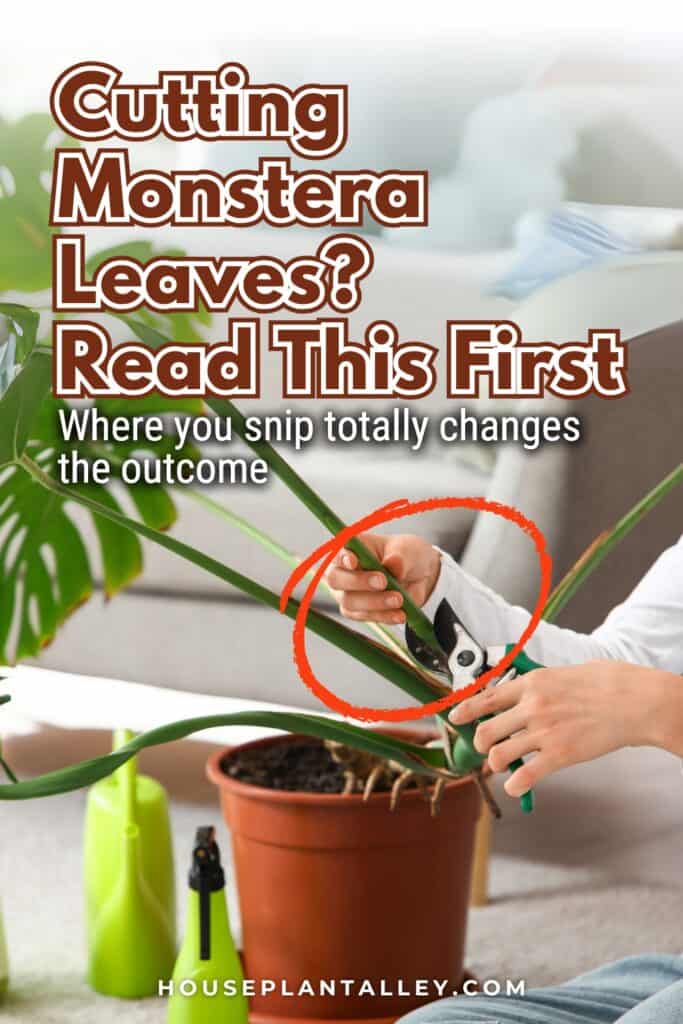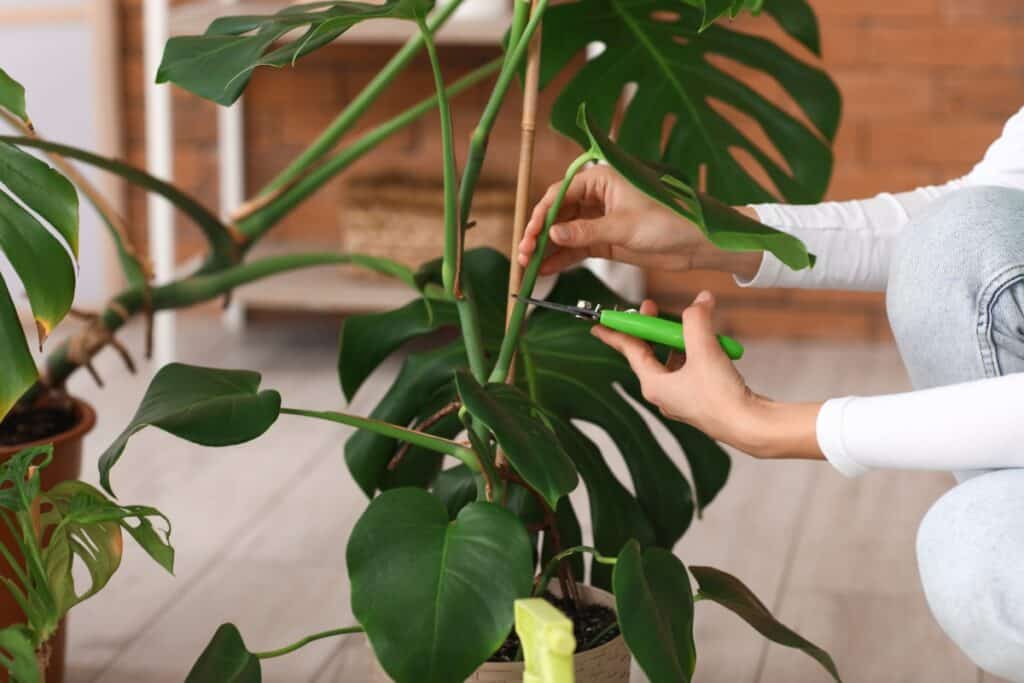Pruning a Monstera requires more than just randomly snipping leaves when they look unruly. Plant specialist Dr. Sarah Chen notes, “Each cut affects the plant’s future growth pattern and overall health.” The process involves understanding specific growth stages, using proper tools, and timing interventions correctly. From juvenile leaves to mature splits, every Monstera develops unique characteristics that influence pruning decisions. Mastering these essential techniques transforms an overwhelming task into a rewarding horticultural skill.

Contents
Understanding Your Monstera’s Growth Pattern
Every Monstera plant exhibits unique growth patterns that directly influence proper pruning techniques. These tropical climbers develop distinct growth habits as they mature, with new leaves emerging from nodes along the main stem.
The plant’s natural leaf development follows a predictable cycle: juvenile leaves start small and solid, while mature foliage displays characteristic splits and holes. Stems grow upward and outward, seeking support structures while producing aerial roots at regular intervals.
Understanding these patterns helps gardeners identify where to make strategic pruning cuts – typically above nodes where new growth emerges, ensuring the plant maintains its desired shape and size.

Essential Tools and Safety Equipment for Pruning
Successful Monstera pruning requires several essential tools and safety items to protect both the plant and the gardener. Sharp, clean pruning shears are the primary tool, ensuring precise cuts that promote healthy healing. Safety gloves protect hands from sharp edges and plant sap while handling the foliage.
Additional necessary items include:
- Disinfectant solution for sanitizing tools
- Clean workspace or drop cloth
- Collection container for trimmings
- Measuring tape for precise cutting lengths
- Spray bottle with water
- Paper towels for cleanup
Always inspect tools before use and clean them thoroughly afterward to prevent disease transmission between plants.
Step-by-Step Guide to Perfect Pruning Technique
When approaching Monstera pruning for the first time, gardeners should follow a systematic process that maximizes plant health and minimizes stress. The essential pruning techniques begin with inspecting the plant and identifying damaged, yellowing, or diseased leaves for removal.
Following inspection, gardeners should:
- Make clean cuts 1/4 inch above nodes using sterilized shears
- Remove dead or damaged foliage first
- Thin overcrowded sections to improve airflow
- Trim back leggy stems to encourage bushiness
- Cut away excessive aerial roots
“Regular pruning benefits include improved shape, controlled growth, and enhanced vigor,” notes botanical expert Dr. Sarah Chen.
Best Timing and Seasonal Considerations
Throughout the growing season, Monstera plants benefit from strategic timing of pruning activities to maximize growth and minimize stress. Early spring provides favorable conditions as increasing temperatures and natural growth spurts help plants recover quickly from pruning.
The ideal pruning frequency is once annually during the spring growing season. However, seasonal changes impact when additional maintenance may be necessary. While emergency pruning for pests or diseases can occur year-round, avoiding major cuts during winter dormancy helps prevent shock.
“Spring pruning allows Monsteras to redirect energy into new growth patterns,” notes botanist Dr. Sarah Chen. “The plant’s natural cycles support faster healing and robust regrowth.”
Propagating and Growing New Plants From Cuttings
Pruning sessions provide an excellent opportunity to multiply your Monstera collection through propagation. When selecting cuttings, choose healthy stems with at least one node and 1-2 leaves. Clean cuts just below nodes using sterilized shears create ideal propagation points.
Two primary rooting methods prove successful with Monstera cuttings. Water propagation involves placing cuttings in clean water, changing it weekly until roots develop. Soil propagation requires inserting cuttings directly into well-draining potting mix while maintaining consistent moisture.
Both methods typically show root development within 2-4 weeks. Once roots reach 2-3 inches, water-propagated cuttings can be transferred to soil for permanent growth.
